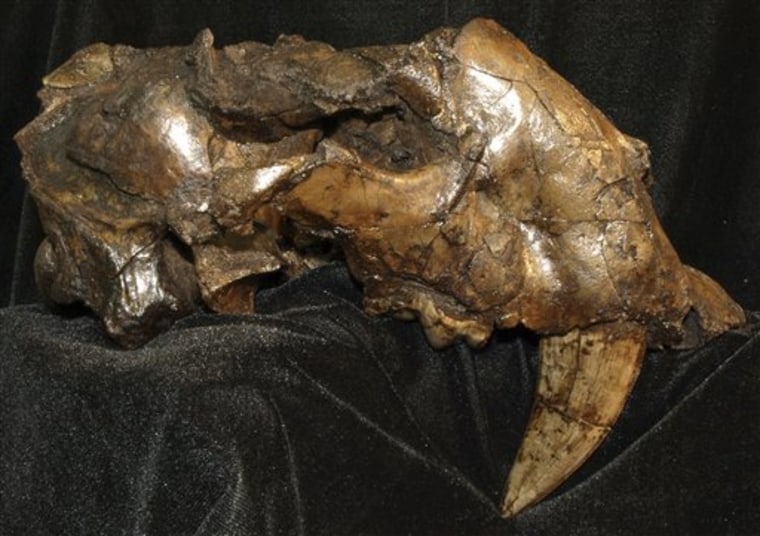An ancient tar pit exposed when Venezuelan oil workers laid a pipeline has yielded a rich trove of fossils, including a type of saber-toothed cat that paleontologists had never found before in South America. Scientists say the find holds the promise of many discoveries to come.
The fossils are 1.8 million years old and include skulls and jawbones of six scimitar-toothed cats — a variety of saber-toothed cat with shorter, narrower canine teeth than other species.
Researchers led by Venezuelan paleontologist Ascanio Rincon announced the discovery this month, saying in addition to proving the cat once lived here, the find also should offer a rare window into the environment shortly after North and South America became connected following an age of separation.
"The deposit could be one of the most important in South America in the last 60 years," Rincon told The Associated Press.
Other experts agree.
"The find is one of the most spectacular and scientifically interesting discoveries of the last decade," said University of Kansas professor Larry D. Martin, an expert on saber-toothed cats who was not involved in the find. "The genus hadn't been known from South America before."
The tar pits are larger than two football fields and near the surface of the soil in the eastern state of Monagas, an oil-rich area.
The state oil company set aside the site for research in 2006 and contacted Rincon at the Venezuelan Institute for Scientific Studies. After months of digging, he and his team found the prized fossils in April 2007.
But for the past year, Venezuela's Cultural Heritage Institute has inexplicably barred researchers from the site, which Rincon says has left it exposed to sun and rain, and potentially damaged the fossils.
The Cultural Heritage Institute revoked Rincon's permit last year, and has yet to publicly explain why. Rincon said his institution is negotiating with the agency so that researchers may return.
Rincon first spoke of the discovery at a symposium on scimitar-toothed cats in Pocatello, Idaho, in May.
Rincon and other researchers say the find suggests scimitar-toothed cats — of the genus Homotherium — crossed from North America to South America shortly after the continents grew together and became linked in modern-day Panama following a 65-million-year separation, a "moment of great exchange" between the continents.
Another expert, Argentine paleontologist Francisco Prevosti, called the Venezuelan discovery of "utmost importance for South American paleontology."
Prevosti and other experts say the now-extinct scimitar-toothed cat was previously confirmed to have inhabited Africa, Europe, Asia and North America — but not South America.
